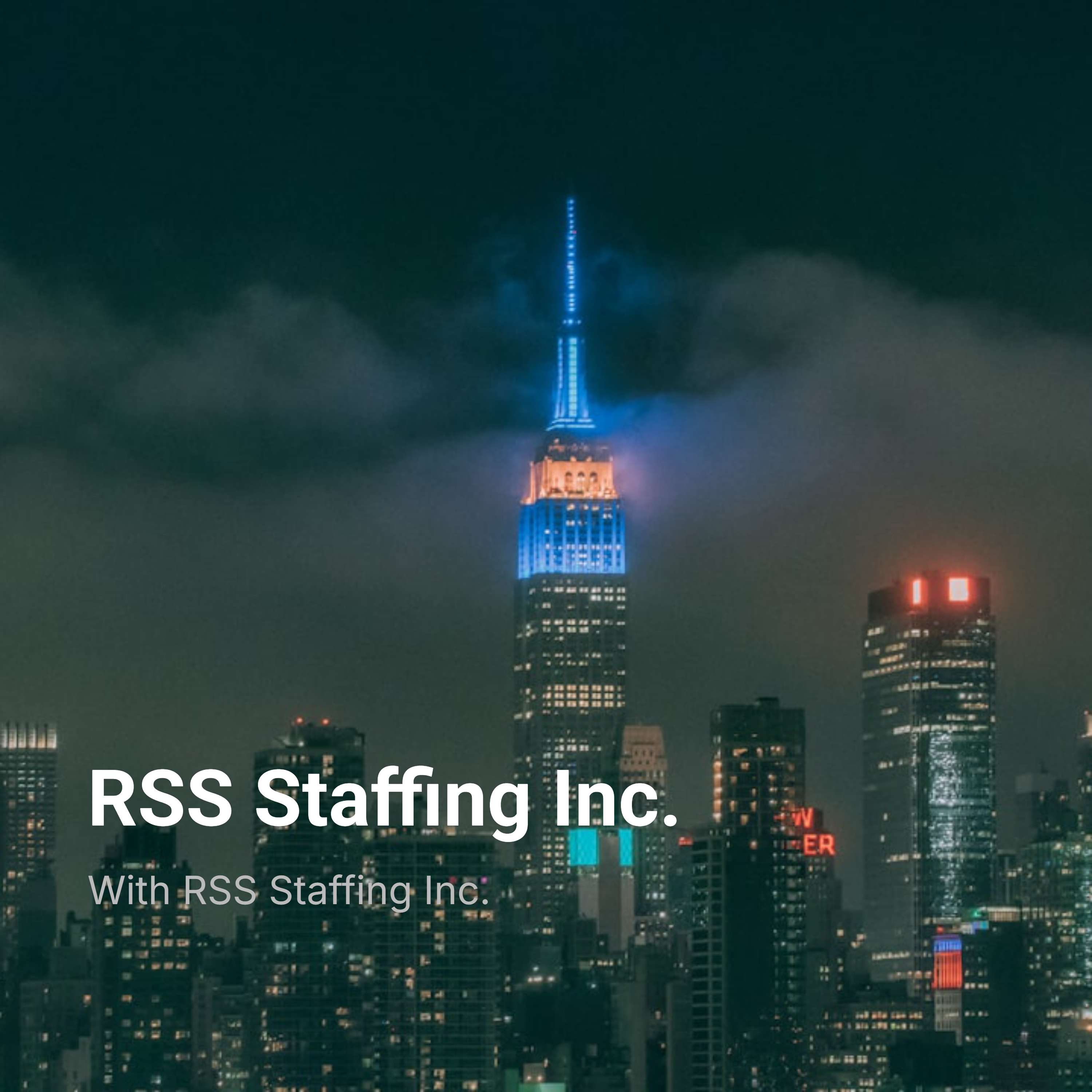The solar energy industry is entering an exciting new chapter as it moves closer to becoming one of the dominant forces in the global energy transition. Solar installers play a critical role in the deployment of renewable energy systems, and their importance is expected to grow significantly in 2025 and beyond. For businesses in the solar sector, understanding the evolving role of solar installers and meeting their staffing needs is crucial to staying competitive in a rapidly expanding market.
Solar installers are the backbone of the solar energy industry. They are responsible for mounting and maintaining photovoltaic (PV) panels, connecting electrical systems, and ensuring installations comply with safety regulations. However, as the solar industry evolves, the scope of a solar installer’s responsibilities is expanding.
The demand for clean energy workers, particularly solar installers, is growing at an unprecedented rate. According to the U.S. Bureau of Labor Statistics (BLS), the employment of solar photovoltaic installers is projected to grow 27% between 2022 and 2032, making it one of the fastest-growing occupations in the country.
These statistics underscore the immense opportunities for workers entering the clean energy space, especially for those looking to specialize as solar installers.
While job growth is promising, the industry faces significant staffing challenges. A shortage of skilled workers, combined with high turnover rates, poses obstacles for companies looking to scale their operations.
To address staffing challenges and meet the growing demand for solar installers, the industry is embracing new strategies and technologies. Here are some key trends that will define solar installer recruitment and workforce development in 2025:
The rise of specialized training programs is helping to close the skills gap. Organizations like Solar Energy International (SEI) are offering certification courses in solar PV installation, battery storage, and system maintenance. Employers are also partnering with community colleges and trade schools to create customized training programs for new hires.
Apprenticeships are becoming a popular way to develop talent. Programs like the U.S. Department of Labor’s ApprenticeshipUSA initiative provide hands-on experience for aspiring solar installers, creating a direct pipeline of skilled workers for the industry.
To tap into a wider talent pool, companies are prioritizing diversity in their recruitment efforts. Initiatives to increase the participation of women and underrepresented minorities in the solar workforce are gaining traction, fostering innovation and inclusivity.
Technology is playing a vital role in streamlining the recruitment process. Applicant tracking systems (ATS) and AI-powered hiring platforms are helping solar companies identify and onboard candidates more efficiently.
To address high turnover rates, companies are offering clear career pathways for solar installers. By providing opportunities for advancement into roles like team leader, project manager, or system designer, employers are incentivizing workers to stay longer.
As solar energy continues to revolutionize the energy industry, the need to build a skilled workforce becomes more pressing than ever. For solar companies, achieving long-term success depends on their ability to find, train, and retain skilled solar installers who can meet the demands of a rapidly growing market. With global renewable energy installations expected to skyrocket in 2025, the importance of investing in talent development and forward-looking recruitment strategies cannot be overstated.
In this section, we’ll explore workforce challenges specific to the solar industry, delve into the critical importance of solar workforce development, and examine emerging trends that will shape how companies attract and nurture talent.
The U.S. Department of Energy (DOE) projects that by 2035, solar energy could power 40% of the nation’s electricity. Achieving this ambitious target will require not only billions of dollars in investment but also an unprecedented expansion in skilled labor. Solar installers, in particular, will need to be hired and trained at scale to meet the expected surge in demand for residential, commercial, and utility-scale solar projects.
The Solar Energy Industries Association (SEIA) estimates that the U.S. must install an average of 30 GW of new solar capacity annually through 2030 to remain on track for its climate goals. This means the demand for experienced solar installers will increase by 50% in the next five years alone. Without adequate workforce development, the industry risks installation backlogs, project delays, and lost revenue opportunities.
In 2025, solar systems are far more advanced than they were just a decade ago. Innovations in solar PV modules, battery storage, microinverters, and smart energy systems are transforming the industry. For instance, bifacial solar panels, which capture sunlight on both sides, are becoming increasingly popular due to their higher energy output. Similarly, AI-driven energy management platforms now allow customers to monitor and optimize their energy usage in real time.
These advancements require solar installers to have deeper technical knowledge and the ability to integrate a variety of components seamlessly. Workforce development programs must now focus on equipping installers with the skills needed to work with cutting-edge technologies, from battery storage systems like Tesla’s Powerwall to advanced solar tracking systems used in utility-scale projects.
Addressing the talent shortage in the solar industry will require a multi-pronged approach that involves educational institutions, government support, and private sector investment. Below are several strategies that companies can adopt to bridge the gap and build a skilled workforce for 2025 and beyond.
One of the most effective ways to grow the solar workforce is by partnering with trade schools and vocational training programs. These institutions play a critical role in preparing workers with the technical skills required for solar installation, such as electrical wiring, system design, and safety compliance.
By creating formal partnerships with trade schools, companies can establish “direct-to-employment” pipelines. For example:
Hands-on experience is crucial for solar installers to gain the practical knowledge needed for fieldwork. Apprenticeship programs provide an excellent opportunity for new entrants to the solar workforce to learn on the job while earning a paycheck. These programs typically pair trainees with experienced mentors who guide them through real-world installations and system maintenance.
Some states, like California and Massachusetts, have launched apprenticeship initiatives specifically targeting renewable energy jobs. These programs not only help individuals gain certifications but also ensure companies have access to a steady stream of skilled workers.
Federal and state governments are increasingly stepping up to support workforce development in the clean energy sector. The Inflation Reduction Act (IRA) of 2022 allocated billions of dollars to renewable energy incentives, including funding for workforce training. Companies that take advantage of these grants can offset the costs of training new workers and upskilling existing employees.
Additionally, state-level programs like New York’s Clean Energy Workforce Development Program provide resources to companies for hiring and training workers in solar energy, battery storage, and energy efficiency.
As the solar industry matures, companies are adopting innovative strategies to attract and retain talent. These trends will play a major role in shaping the workforce of 2025.
Virtual reality (VR) is emerging as a powerful tool for workforce training in the renewable energy sector. VR simulations allow solar installers to practice complex installation procedures in a risk-free environment, reducing errors and improving safety awareness.
For example, companies like NextEnergy Solar are using VR platforms to train employees on tasks such as rooftop panel installation and electrical system troubleshooting. By immersing trainees in real-world scenarios, VR accelerates the learning curve and ensures installers are well-prepared for fieldwork.
While most solar installer jobs require on-site work, administrative and project management roles in the industry are increasingly offering remote and hybrid work options. This flexibility appeals to a wider pool of job seekers, especially younger workers who prioritize work-life balance.
Additionally, cloud-based platforms like Aurora Solar and PVComplete make it easier for teams to collaborate remotely on system design and performance analysis, further enabling hybrid work models.
The solar industry has recognized that fostering a diverse workforce is not only socially responsible but also beneficial for innovation and growth. Companies are making a concerted effort to recruit women, veterans, and individuals from underserved communities into solar jobs.
Programs like GRID Alternatives, a nonprofit focused on providing solar installations to low-income households, also include workforce development initiatives that train individuals from disadvantaged backgrounds to become solar installers. By prioritizing DEI, the industry is creating opportunities for a broader range of workers while addressing labor shortages.
Earning certifications is increasingly becoming a requirement for solar installers who want to stand out in a competitive job market. Certifications not only validate a worker’s skills but also reassure employers and customers that installations will be completed to the highest standards.
The solar industry offers abundant opportunities for career growth, making it an attractive field for job seekers. While many workers start as entry-level installers, the career pathways available within the sector are diverse and rewarding.
By offering mentorship programs and clear promotion paths, companies can retain top talent and ensure their workforce remains motivated and engaged.
The solar energy boom is not confined to the U.S.—it’s a global phenomenon. Countries like China, India, and Germany are leading the way in solar adoption, driving demand for skilled workers on an international scale.
For U.S. companies, understanding these global trends is critical for benchmarking best practices and staying competitive in the international market.
Companies that want to succeed in staffing solar installers need to adopt a proactive and strategic approach. Below are some actionable strategies:
Providing continuous training opportunities ensures workers stay updated on the latest solar technologies and safety protocols. In-house training programs and tuition reimbursement for certification courses can go a long way in retaining talent.
Promoting from within is a cost-effective way to fill critical roles. Solar installers who show potential can be trained for supervisory or technical roles, reducing reliance on external hires.
Partnering with trade schools, technical colleges, and vocational training centers allows employers to recruit directly from the source. Offering internships and scholarships can also help attract top talent.
To attract and retain skilled workers, companies must offer competitive wages, healthcare benefits, and opportunities for career advancement. Many solar companies are also offering flexible schedules and remote work options for administrative roles to improve work-life balance.
Creating a supportive and inclusive work environment can improve employee satisfaction and retention. Regular team-building activities, recognition programs, and open communication channels are effective ways to enhance workplace morale.

CNC Operators are primarily responsible for running CNC machines. This involves loading parts into the machine, starting the machine, and overseeing the machining process...

Strikes and labor unrest are part of the industrial landscape, a powerful tool for workers to negotiate better terms and conditions. However, they can...

Trends, Opportunities, and Workforce Challenges The demand for renewable energy has skyrocketed in recent years, making wind power a cornerstone of global clean energy...